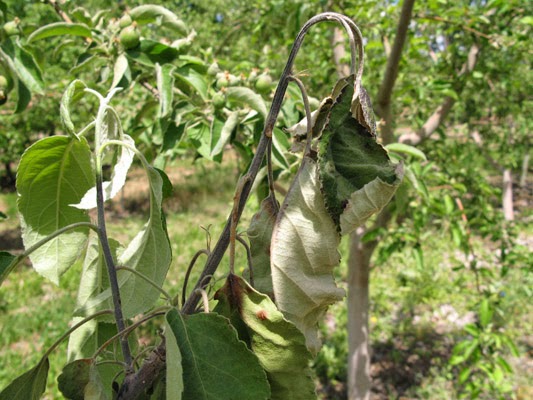As if trees didn’t have enough trouble from last summers’s hail, fall's damaging freezes, and a late spring, some have now developed fire blight! This bacterial disease is common on crab apple, apple, mountain ash and pear.
Warmer than average temperatures during blossom time creates ideal conditions for disease development. If rain falls at the same time, its spread is rapid. And guess what? This spring was just perfect, if you were fire blight bacteria!
 |
| Fire Blight Shepherds Crook photo Utah State Extension |
Fire blight bacteria spend the winter in the canker margins until warm, moist spring weather stimulates bacterial growth and oozing. Insects carry the ooze to flowers where the bacteria reproduce quickly in the sugary nectar.
Bacteria also spread through splashing water into natural openings and wounds created by hail, insect feeding and pruning. We’ve seen a great deal of fire blight this year on crabapples damaged by last July’s severe hail storm.
Prune out the damaged branches. Make pruning cuts 8 to 12 inches below visible signs of infection. Surface sterilize pruning tools with bleach, ethyl alcohol or disinfectant sprays after each cut to avoid spreading fire blight on pruning tools.
Local weather conditions determine disease severity each year.
Check out this CSU Extension fact sheet for more information.




